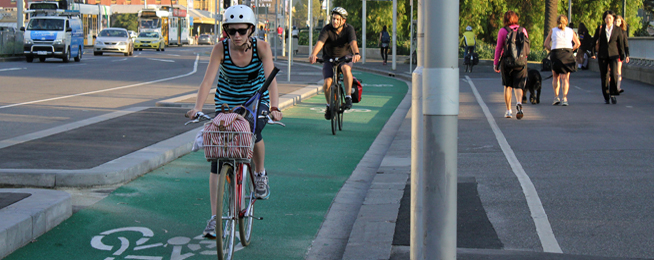As governments across the country grapple with ways to reduce crashes, new research suggests that building more protected bike lanes may just do the trick.
New evidence from the US shows what bike advocates have known for a long time, cities that have high numbers of people riding bikes have relatively safer roads overall — for pedestrians and drivers too.
Despite expectations, after looking at 13 years of demographic and traffic data from 12 large US cities, researchers found that more people riding (safety in numbers effect) was not the key reason that these cities are safer for road users.
Instead, it was the prevalence of facilities built for people who ride, particularly separated and protected bike lanes, that make roads safer for everyone. This is because bike facilities act as "calming" mechanisms on traffic, slowing cars and reducing fatalities.
Lower-speed built environments were also strongly associated with reduced risks for all road users.
The most effective protected bike lanes are those which are attractive, comfortable, connected and provide a meaningful barrier from motorized traffic.
“Things like protected bike lanes, if we really do them right… then all of a sudden, you get a whole different population out there able to bike in most cities,” study co-author Wesley Marshall told Popular Science.
The study presents bike lanes as a simple, easy and effective way for governments to reduce traffic deaths and is a good evidence pace to help inform policy decisions.
Co-author Nicholas Ferenchak hopes this study simplifies the ways in which cities move forward.
"When we believed it was the old safety-in-numbers concept, that meant we had to figure out how to get more people on bicycles to make a city safer," Ferenchak said.
"That's not easy. But this research has boiled it down for city planners: create cycling facilities, and you'll see the impact."
It's also important to recognise that infrastructure cannot be viewed in isolation.
For a truly transformative approach to getting more people riding bikes, infrastructure must be complemented with supportive laws and policies, evidence based behaviour change, safe systems design and speed reduction.
See the FUll STudyBecome our friend
Find out more about Bicycle Network and support us in making it easier for people to ride bikes.


